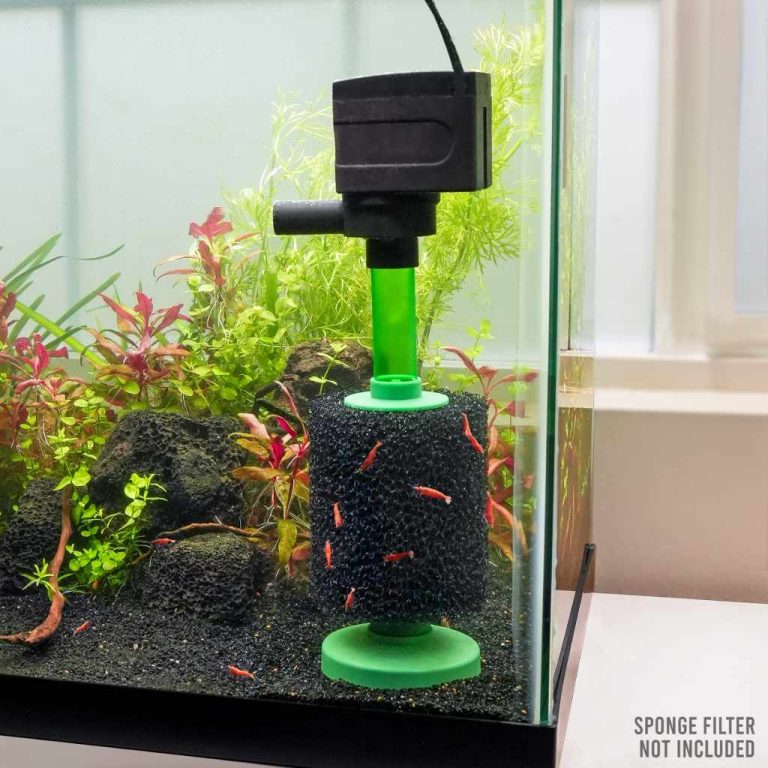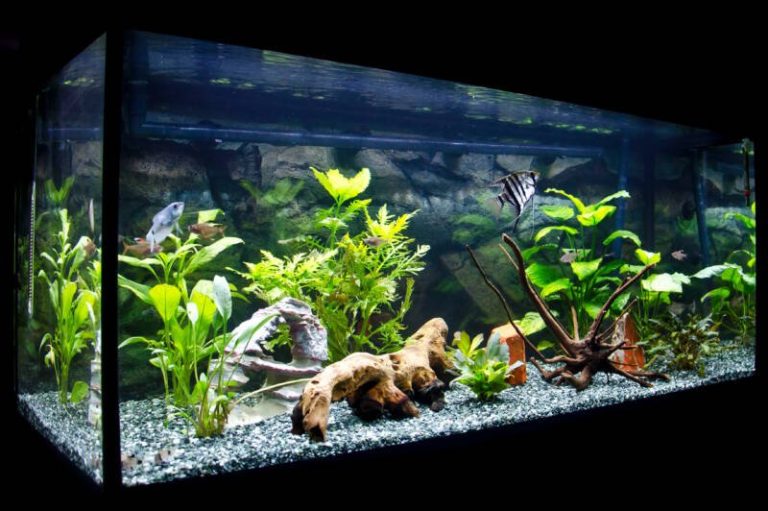Male Vs Female Nerite Snail: Decoding the Differences.
Male and female nerite snails are identical in appearance. Nerite snails are a popular choice for freshwater aquarium enthusiasts due to their decorative shells and ability to clean algae.
They are also known for their unique reproductive behavior where they lay eggs that will not hatch in freshwater. However, there is often confusion surrounding the differentiation between male and female nerite snails. In reality, male and female nerite snails are identical in appearance, making it difficult to determine their gender.
It is also worth noting that nerite snails are not hermaphroditic, meaning they can only reproduce with a mate of the opposite sex. In this article, we will explore more about nerite snails and their behavior in aquariums.

Credit: www.petguide.com
What Are Nerite Snails?
Male Vs Female Nerite Snail: What Are Nerite Snails?
When it comes to aquariums, snails can play a crucial role in cleaning up the tank by consuming algae and waste products. One of the most popular types of snails are nerite snails. Here’s everything you need to know about these amazing creatures.
General Information About Nerite Snails
- Nerite snails are a type of freshwater or saltwater snail found in marine and brackish water environments.
- They are small in size, with most species only growing to around 1 inch in length.
- These snails can have different color markings and patterns such as zebra stripes, tiger stripes, or chevron patterns.
- They have a hard shell which offers them protection against predators.
Physical Characteristics Of Nerite Snails
- Nerite snails have a round and spiral-shaped shell that is slightly pointed at the top.
- The shell has a range of colors depending on the species, from yellow to black.
- They have two tentacles on their head, which they use to sense their surroundings.
- Both male and female nerite snails have the same physical appearance, making it difficult to distinguish their gender just by looking at them.
Habitat And Diet Of Nerite Snails
- Nerite snails can be found in freshwater, saltwater, and brackish aquatic environments.
- They prefer a temperature range between 72 to 78 degrees fahrenheit and a ph between 7.5 to 8.5.
- Their diet mainly consists of algae, and they can help keep the tank clean by eating up excess algae and waste products.
Reproduction Process Of Nerite Snails
- Nerite snails have different reproductive cycles depending on their environment.
- In freshwater habitats, breeding is done through sexual reproduction, while in saltwater habitats, they reproduce through asexual reproduction.
- Females lay eggs on smooth and hard surfaces, and the hatching time varies depending on water temperature and other environmental factors.
Nerite snails are not only a beautiful addition to an aquarium, but also a helpful species, keeping the tank clean and aiding in its biodiversity. Whether you opt for male or female nerite snails, both have the same traits and can thrive in different environments with ease.
Give your aquarium a boost with these tiny, amazing creatures!
Male Vs. Female Nerite Snails: The Physical Differences
Male Vs Female Nerite Snail: The Physical Differences
If you’re a fan of nerite snails, you may be curious about the physical differences between males and females. When it comes to identifying their gender, there are a few key characteristics to look out for.
Explanation Of How To Differentiate Between Male And Female Nerite Snails
Differentiating between male and female nerite snails can sometimes be tricky, as they do not exhibit any striking physical differences. Some of the factors to consider when identifying their gender include their color, size, and shape.
Identification Of Physical Characteristics To Look Out For
Here are some of the physical characteristics to look out for when identifying the gender of nerite snails:
- Size: Male nerite snails are generally smaller and slimmer than females, while females tend to be larger and rounder.
- Shell shape: Females often have a rounder and more bulbous shell shape, whereas males usually have a spiral-shaped shell.
- Color: Depending on the species of nerite snail, females may have brighter and more colorful markings than the males.
Visual Aid (Chart Or Infographic) To Showcase The Differences
Here is a visual aid that showcases some of the physical differences between male and female nerite snails:

Overall, while identifying the gender of nerite snails can be challenging, paying close attention to their size, shell shape, and color can be helpful in determining their gender. Whether you’re observing them in an aquarium or in the wild, understanding these physical differences can add an additional layer of enjoyment to observing these fascinating creatures.
Behavioral Differences Between Male And Female Nerite Snails
Male vs female nerite snail: behavioral differences between male and female nerite snails
Nerite snails are fascinating creatures with unique behavioral patterns that differ between males and females. Understanding these patterns can help us appreciate and care for these snails better. We will explore the crucial differences between male and female nerite snails’ behaviors.
Explanation Of The Behavioral Characteristics Unique To Male And Female Nerite Snails
Male and female nerite snails have certain characteristics that set them apart from each other. Here are some unique behavioral traits you might observe in male and female nerite snails:
Male Nerite Snails
- Male nerite snails are more active and may occasionally chase other snails in the aquarium.
- They tend to explore more and cover more distance than female snails.
- Male snails may migrate during the breeding season to find mates.
Female Nerite Snails
- Female nerite snails are comparatively slow and less active than males.
- They often spend more time grazing on algae or other food sources.
- During mating season, females lay eggs on hard surfaces, such as rocks, glass, or leaves.
Comparative Analysis Of The Behaviors Exhibited By Male And Female Nerite Snails
While there are some unique behavioral characteristics of males and females, some general behavior patterns apply to both genders. Here are some of the behavioral analyses of nerite snails:
- Nerite snails are excellent algae eaters and can sustain themselves on algae present in the aquarium.
- They have a strong ability to attach themselves to hard surfaces and move with ease.
- They are well-adapted to a wide range of water parameters and can tolerate variations.
- Nerite snails are not aggressive, and both males and females live in harmony with other aquatic creatures.
Importances Of These Behavioral Patterns In The Life Of The Nerite Snails
Understanding the behavioral patterns of male and female nerite snails is crucial for the overall well-being of these creatures. Here are some of the reasons why it’s essential to understand their behavioral uniqueness:
- It helps aquarists maintain a healthy environment for these snails.
- It allows for better breeding management for nerite snails.
- Knowing the behavioral differences can enable aquarists to identify any abnormal behavior or stress signs in their snails.
Male and female nerite snails have distinct behavioral characteristics that play a crucial role in their survival, well-being, and breeding. By understanding and observing these unique traits, aquarists can provide better care for these fascinating creatures in their aquariums.
Breeding And Reproduction In Nerite Snails
Nerite snails, a popular freshwater aquarium species, come in male and female sexes. Breeding and reproduction are crucial aspects for their survival and critical for maintaining a healthy population. In this section, we’ll provide an in-depth analysis of the breeding process of the nerite snails.
We’ll also examine the characteristics of reproductive behaviors specific to male and female nerite snails. Lastly, we’ll discuss the factors that affect breeding and reproduction in nerite snails.
In-Depth Analysis Of The Breeding Process Of The Nerite Snails
To breed nerite snails, you need to create a favorable environment for them. Proper water conditions with a ph range of 7. 0 to 8. 0 and a temperature of 70 to 75°f are essential for successful breeding. Nerite snails breed well in alkaline water with moderate hardness.
The next step is to introduce male and female nerite snails into the breeding tank. Once they are accustomed to the new environment, they’ll start to mate. The fertilized eggs are laid on hard surfaces and hatch into larvae. The larvae then swim freely before settling on a surface and developing into snails.
Characteristics Of Reproductive Behaviors Specific To Male And Female Nerite Snails
Males and females have different reproductive structures. The reproductive system of male nerite snails includes a penultimate kidney and an elongated penis. In contrast, the females have a seminal receptacle, an oviduct, and an ovipositor in their reproductive system.
Male nerite snails show reproductive behavior by chasing the females and copulating with them. They’ll show boat-like swings to attract females by extending, retracting, and twisting the body. On the other hand, female nerite snails show reproductive behavior by laying eggs on hard surfaces.
Factors That Affect Breeding And Reproduction In Nerite Snails
Several factors affect the breeding and reproduction of nerite snails. Some of them include:
- Temperature and water chemistry: The optimal temperature and water chemistry are essential for breeding nerite snails.
- Food availability: Adequate food supply is essential for nerite snails to remain healthy and breed successfully.
- Water movement: Insufficient water movement in the breeding tank may cause poor fertilization and decreased hatching rates.
- Light exposure: Proper light exposure is necessary for maintaining the health of the snails, and too much or too little light might affect breeding.
Successful breeding and reproduction are key to perpetuating the growth of nerite snails. By maintaining optimal water chemistry, introducing males and females into the breeding tank, and providing adequate food, water movement, and light exposure, nerite snails can grow and thrive.
Frequently Asked Questions Of Male Vs Female Nerite Snail
What Is The Difference Between Male And Female Nerite Snails?
Male and female nerite snails can be distinguished by examining the shape and color of their shells, as well as their reproductive organs.
How Do You Determine The Sex Of A Nerite Snail?
To determine the sex of a nerite snail, examine the shape and color of their shell, as well as their reproductive organs.
How Many Eggs Can A Female Nerite Snail Lay?
A female nerite snail can lay up to 200 eggs at once, which will hatch in around 2-3 weeks under optimal conditions.
Can Male And Female Nerite Snails Live Together?
Yes, male and female nerite snails can live together in the same tank without issues. They are peaceful creatures and usually get along well.
Conclusion
Based on our analysis, it’s clear that nerite snails are a small and low-maintenance addition to any aquarium. They are popular for their algae-eating habits and their ability to keep tanks clean. However, understanding the differences between male and female nerite snails can be challenging for new aquarists.
Male nerites are identified by their smaller size and dark stripes, while females are typically larger and have a plain shell. Breeding nerite snails can be a complicated process, and it’s important to keep the appropriate conditions in the tank to ensure their success.
Whether you’re adding a new nerite snail or trying to determine the sex of one you already have, it’s important to pay attention to their physical characteristics. With patience and understanding, nerite snails can live happily in any aquatic environment and provide a valuable service to its ecosystem.






